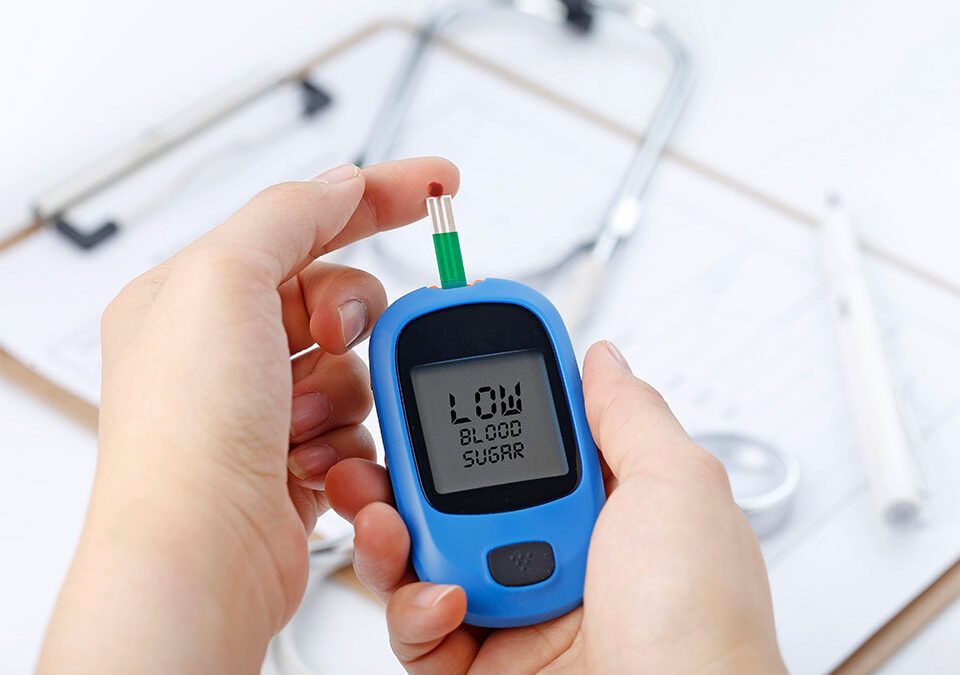
What Is Idiopathic Postprandial Syndrome (IPS)?
November 23, 2022
Could A Pancreas Transplant Cure Diabetes?
November 23, 2022Untreated high blood glucose levels can lead to a severe condition known as glucotoxicity, which is also sometimes referred to as glucose toxicity. Glucotoxicity in diabetes is caused by damage to the beta cells of the pancreas.
Beta cells help the body in creating and releasing the hormone insulin. Insulin pulls blood sugar (also known as blood glucose) out of your blood so that the cells in your body can use it as a source of energy. This natural process helps in regulating your blood sugar or blood glucose levels.
Over the course of time, high blood glucose (which is also known as hyperglycaemia) can damage your beta cells, which can lead to a decrease in the production of insulin and a subsequent increase in your body’s resistance to insulin, eventually paving the way for glucotoxicity. This is the glucotoxicity mechanism.
Glucotoxicity Symptoms
Uncontrolled high blood sugar levels can eventually cause damage to your tissues and organs. Moreover, it can also decrease the white blood cells count in your body, which are a vital part of your body’s immune system. With a weakened immune system, you are at an increased risk of developing infections. It can also make it more difficult for healing of wounds.
Other symptoms of glucotoxicity are mentioned below:
- Excessive thirst
- Frequent urge to urinate
- Blurry vision
- Fatigue
- Headache
- Confusion
- Dry mouth
If your blood glucose level readings are above 240 mg/dL (milligrams per decilitre) on a regular basis, you need to contact your doctor as soon as possible.
Causes of Glucotoxicity
Glucotoxicity is a serious condition that is caused by uncontrolled high blood sugar over a long duration, which is also a very common symptom of diabetes. That said, you can have high blood glucose levels, without having diabetes. High blood sugar that is not in any way related to diabetes is generally caused by an underlying illness, especially those related to the body’s endocrine system or from certain medications (such as steroids).
Researchers have also found a robust link between glucotoxicity and oxidative stress, which refers to having a vast number of free radicals in your body without sufficient antioxidants to fight them. This can cause damage to your beta cells, eventually paving the way for glucotoxicity.
Ongoing high blood glucose levels can lead to oxidative stress. Other causes include stress, lack of exercise and physical activity, and an unhealthy diet.
Diagnosis of Glucotoxicity
The most optimum way to check for glucotoxicity is to test your blood sugar and insulin levels regularly. If you have diabetes, you would be doing this in all probability. If you do not have diabetes or do not check your blood sugar levels regularly, you could talk to your doctor about getting an HbA1C test done. This test shows your average blood sugar levels over the last 3 months.
After your doctor is done with checking your blood sugar levels and feels that constant monitoring is needed, you can make excellent use of a glucose monitor that you can use at your home.
If you have fasting blood glucose levels above 126 mg/dL or an A1C reading above 6.5% consistently, your risks of developing glucotoxicity are higher.
Glucotoxicity Treatment

The most optimum way to treat glucotoxicity is to lower blood glucose levels. You can achieve this by making alterations to your diet, getting more exercise and physical activity, intaking medications, and getting insulin shots.
Research that has successfully linked glucotoxicity to oxidative stress also advises that antioxidant drugs (such as troglitazone and metformin) might be an efficacious treatment for oxidative-stress—induced glucotoxicity.
Glucotoxicity Complications
If you are at an increased risk of developing glucotoxicity, it is essential to contact your doctor at the earliest so that you can come up with plans to lower your blood sugar levels.
Glucotoxicity, when left untreated, can lead to vascular tissue complications, a decrease in the functioning of endothelial cells, vision problems, kidney problems, nerve problems, and an increased risk of developing cardiovascular disease.
Glucotoxicity Prevention
You can successfully decrease your risk of developing glucotoxicity by reducing your blood glucose levels. The foremost step in doing this involves minimising your intake of carbohydrates such as bread, cereal, pasta, yogurt, milk, snacks (such as crackers and chips), sugar-laden sweets such as sodas, packaged juices, candies, cakes, and cookies, and grains such as rice, barley, and oatmeal.
You need to note that complete abstention from these foods in not required. The focus should be on consuming them in moderation. The amount of carbs that you should consume depends on your height, weight, and level of activity. As a general rule, you must consume 30-75 grams of carbohydrates as part of a main meal. For snacks, keep it between 15-30 grams.
Eliminating stress, too, can help in preventing blood sugar spikes. If you are facing chronic stress, you must indulge in de-stressing activities, such as meditation and breathing exercises, among others. In addition, make it a point to get sufficient sleep. Doing yoga, going for brisk walks, and engaging in deep-breathing techniques can help in increasing insulin sensitivity.
A 2013 study found that regular practice of relaxation exercises improved secretion of insulin and reduced inflammation, both of which are vital when it comes to treating high blood glucose and glucotoxicity.
To Sum It Up:
Glucotoxicity may have harmful effects on your beta cells and overall health. That said, you can prevent as well as treat glucotoxicity by keeping your blood glucose levels in the normal range. If you have diabetes, you need to work closely with your healthcare practitioner to ensure that your medication dosage is apt for you.
References:




